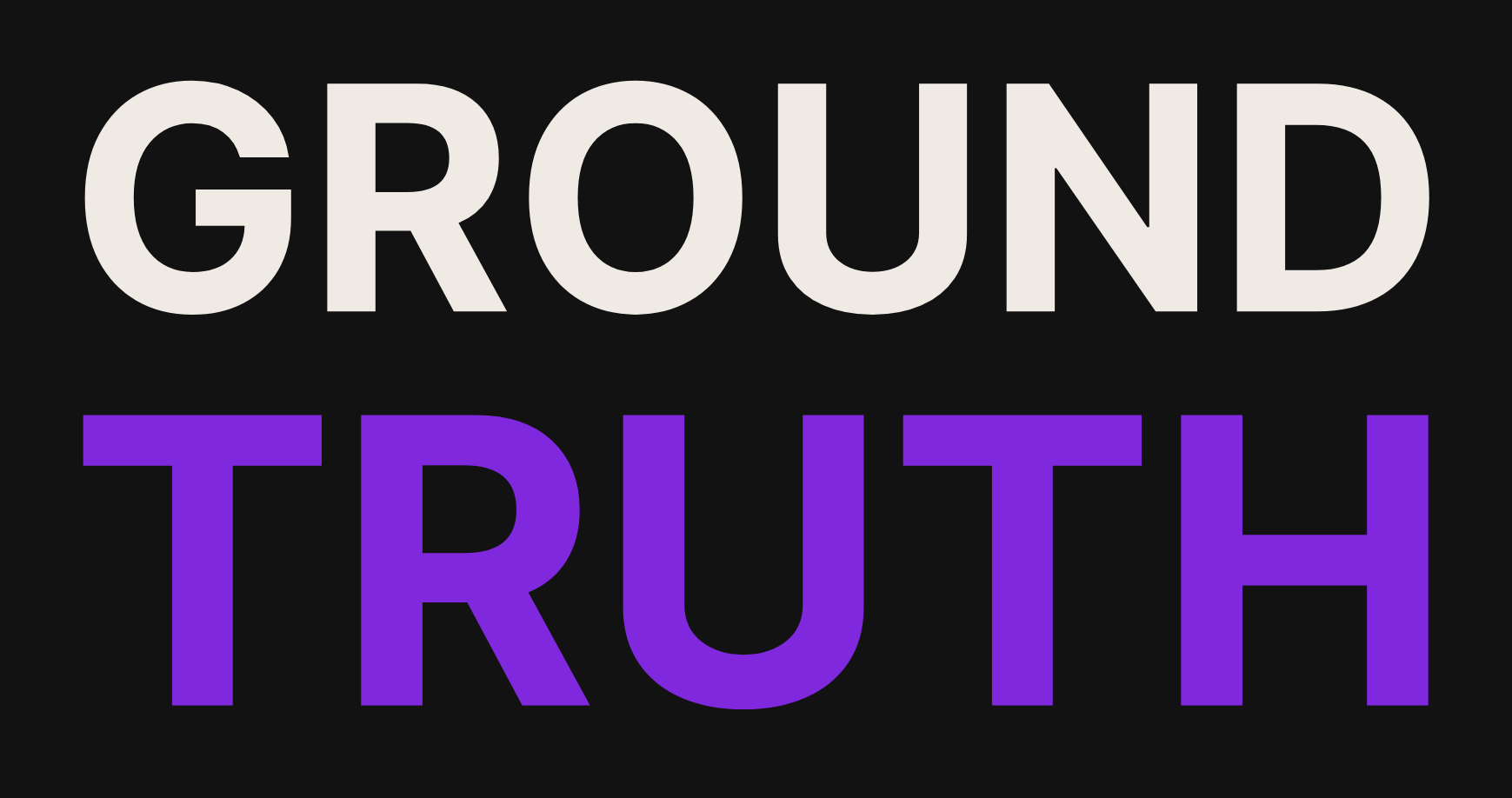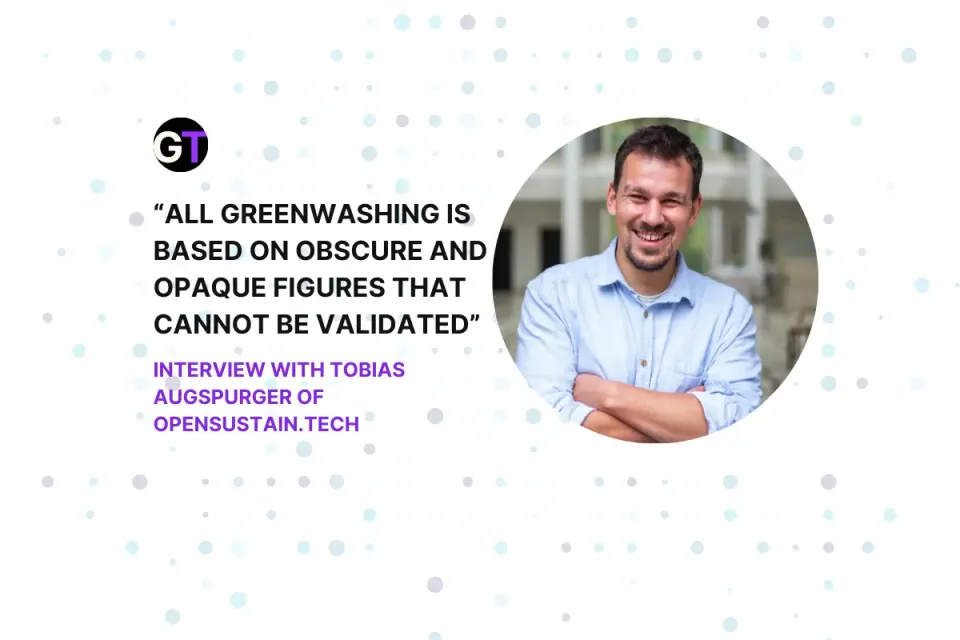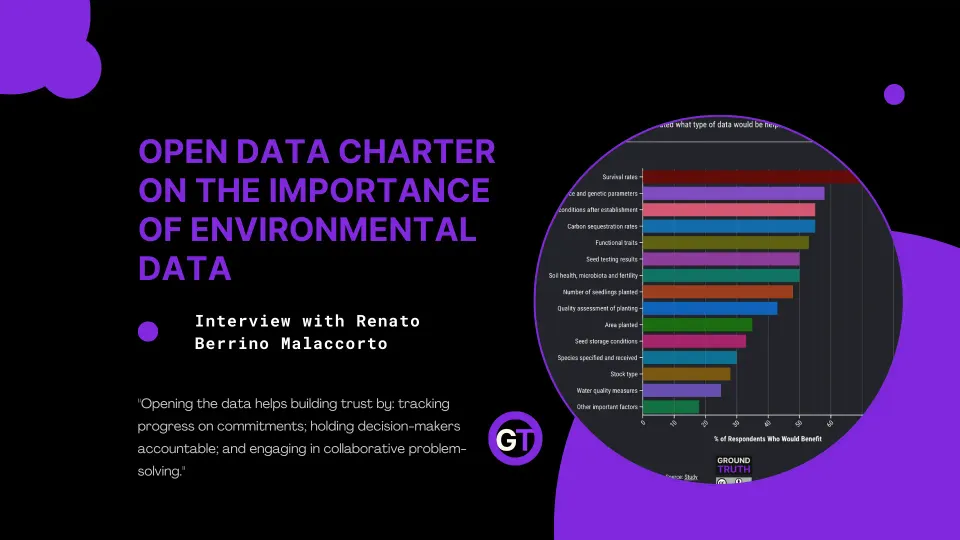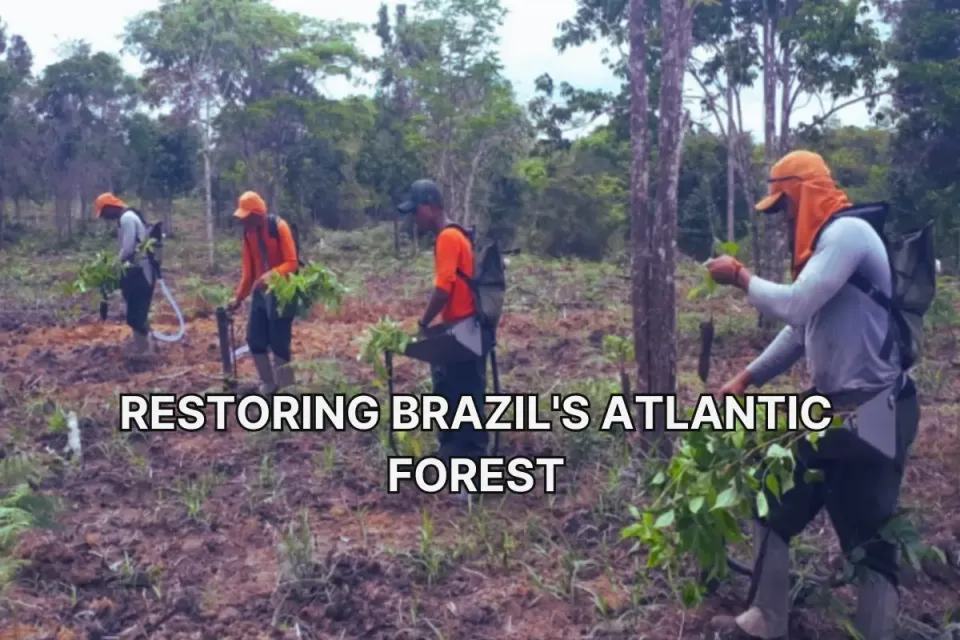One Open-Source Atlas to Map Them All
Global Ecosystems Atlas uses AI and remote sensing to map all ecosystems, aiding conservation and tracking biodiversity targets by 2026.

This article by Abhishyant Kidangoor originally appeared in Mongabay.
- The Global Ecosystems Atlas is a tool that aims to serve as an open-source repository for data on all the ecosystems in the world.
- Developed by the intergovernmental initiative Group on Earth Observations, the Global Ecosystems Atlas pulls together existing data while also using remote sensing and AI technologies to fill gaps in areas where data don’t exist.
- The proof of concept for the tool was launched at the COP16 biodiversity summit in Cali, Colombia, in November last year.
Say you want to see how the world is faring when it comes to biodiversity and ecosystem protection. Is it progressing fast enough? Are we on track to meet the lofty goal to protect 30% of nature by 2030, as laid down in the Global Biodiversity Framework?
In all likelihood, you might be hard-pressed to find a satisfactory answer.
“If we were to attempt a stock take of our progress, which will have to be done in 2026, we would have a really hard time,” Yana Gevorgyan, secretariat director of the Group on Earth Observations (GEO), an intergovernmental initiative dedicated to understanding our planet better, told Mongabay in a video interview. “Because information about the world’s ecosystems is very fragmented, scattered and inconsistent.”
According to GEO, more than half of the world’s ecosystems are unmapped, making it a challenge to keep track of protection efforts and restoration targets. The organization is now working to solve this problem by building an open-source tool that serves as a database for all of the world’s ecosystems. The proof of concept of the Global Ecosystems Atlas was launched at the COP16 United Nations Biodiversity Conference in Cali, Colombia, in November last year.
With the aim of completing the global map by 2026, GEO is developing the tool by gathering and collating all existing data about ecosystems. It also aims to combine existing data with remote sensing and artificial intelligence technologies to fill data gaps in unmapped regions of the world.
“It allows us to create inventories of ecosystems in order to put ecosystems on the balance sheet,” Gevorgyan said, referring to how the tool would help local communities, governments and businesses access data crucial for conservation efforts and policymaking.
Yana Gevorgyan spoke with Mongabay’s Abhishyant Kidangoor about the gaps the Global Ecosystems Atlas aim to fill, the challenges involved in building it, and how she envisions the tool being used. The following interview has been lightly edited for length and clarity.
Mongabay: How would you describe the Global Ecosystems Atlas to someone who hasn’t heard about it yet?
Yana Gevorgyan: If I were explaining it to a layperson or a high school student, I would say it’s a dynamic map of all of the world’s ecosystems. It presents them to us in a harmonized way so that all of us can actually look at nature or ecosystems through a shared lens. It is truly the world’s first resource that provides comprehensive and harmonized information about the spatial distribution of ecosystems. It allows us to create inventories of ecosystems in order to put ecosystems on the balance sheet and to actually manage them just like we manage all our key strategically important assets.
Mongabay: What gaps are you hoping to fill with the Global Ecosystems Atlas?
Yana Gevorgyan: A massive gap in our knowledge about the world’s ecosystems. The light bulb went off in a colleague of mine, Jillian Campbell at the Secretariat of CBD [Convention on Biological Diversity]. The Global Biodiversity Framework (GBF) had set the big goal of becoming nature-positive by 2030 with a number of targets to conserve 30% of land and oceans to restore nature.
But one thing she realized was that in implementing these ambitious goals and targets, we would be very challenged to know how well we’re doing because we don’t have any one resource that pulls all the information about the world’s ecosystems into one place. If we were to attempt a stock take of our progress, which will have to be done in 2026, we would have a really hard time because the information about the world’s ecosystems is very fragmented, scattered and inconsistent. She then thought of the right partner who could actually work with all the data that’s out there and pull it together. That’s why Jillian approached GEO, and it was that need and that gap that we decided to close.
On one hand, it is about pulling together and curating all of the existing data about ecosystems, and then identifying where we currently don’t have data about ecosystems and what has not been mapped. Over half of the world’s ecosystem types have not been mapped. And so, the other side of the coin is to actually to close that gap and to put unmapped ecosystems on the map so that we could ultimately have a comprehensive understanding of where all the world’s ecosystems are, what their extent is, and build our knowledge about their condition and health.
Mongabay: What has the journey to build the Global Ecosystems Atlas looked like?
Yana Gevorgyan: The very first conversation was a casual chat in the middle of 2022. But it became more formal on the eve of the GBF adoption [in December 2022]. We sat down with the then-director of the CBD Secretariat Elizabeth Mrema and Jillian, and we agreed to collaborate on this goal. Then we convened for the first time in May 2023. We brought all the key stakeholders from both the data side, but also from the policy and business demand side. In that first convening, we validated the need for this: “Do we actually really need this? Do we have what it takes?” Once we checked all the boxes with a resounding yes, we spent another couple of months doing a high-level design of this project.
It was when the U.K. Defra [Department for Environment, Food & Rural Affairs] and United Nations Environment Programme gave us some seed funding that, in early 2024, we raced to set up a team of experts to work on the development of this proof of concept which we were able to launch in Cali. The seed funding allowed us to work at lightning speed to meet the urgency and present to the world the prototype of what the atlas will be.

Mongabay: How do you envision the tool being used by policymakers and practitioners?
Yana Gevorgyan: At the moment, our proof of concept has limited data. But even now, if you go to our interface and to our platform, you will see data that we’ve collected from 14 countries and from some of the global data sources that shows the distribution of various terrestrial and freshwater ecosystems around the world. You can select an area. Once you select the area, it will tell you what ecosystems are in your area of interest and their extent. It will tell you what area is covered by the ecosystems that are found there. It will also tell you what is the risk to these ecosystems at the moment. We are able to provide that risk information because we’re also pulling data from other global databases like Protected Planet, which provides information about protected areas. You can, therefore, see information about how many of these ecosystems in the area that you’ve selected are, in fact, in protected areas, and how many of them are outside.
We’ve committed to completing the global map by the end of 2026. The coverage will go from reef to ridge, intending to cover terrestrial, freshwater, coastal and also marine ecosystems.
Mongabay: Could you walk me through how the team gathers, curates and compiles the data?
Yana Gevorgyan: In the current proof of concept, we have data from a few large map developers and data providers. That’s one side of the coin. We are effectively undertaking a global knowledge management exercise by actively reaching out to map developers. We will always be prioritizing engagement with specific agencies who are custodians of ecosystem maps. That’s why we also work with governments because they will really, most of the time, have the best data, provided it’s not very outdated. In some countries, data was generated years and years ago, and it’s no longer representative of what’s there.
In our workflow, we do active outreach to map developers, both at country level but also think of academia and conservation organizations that are boots on the ground as they implement projects. They end up mapping things. A key step in our process, because we want to be able to deliver the best quality data, is we are conducting a lot of quality checks and quality assurance. That is a very human-driven process. We will hopefully be able to work with some of our AI technology partners to create an AI-powered protocol that will allow us to do this faster and at greater scale.
All of the data sets that we are receiving will have to go through this rigorous process of quality check to ensure that they actually represent the ecosystem. We also cross-reference these data sets to an international standard that was developed by the IUCN.
The other side of the coin is where things aren’t mapped. That’s where we’ll be using remote sensing and satellite data from existing public sector satellite systems like the Sentinel satellite and Landsat, and, where necessary, also pulling data from our partners on the private sector side. These are the two parallel workflows.
Mongabay: During this process of data gathering and curation, what surprised you the most?
Yana Gevorgyan: Disagreements over how different mappers characterize the same ecosystem in the same location have been quite interesting. That really required us to facilitate conversations between the two map developer teams. But we have realized that this is always going to be part of the process. There are overlapping ecosystems. To represent them on a map, we are going to have to probably make certain decisions about choosing one or the other for representation’s sake. But we also have to be consistent about it and write it all in the metadata to ensure that anyone who’s looking at it really can see the whole process.
The other thing, and I would say this was probably something that became a bonus result of the activity at the country level: When we started to reach out to various agencies and their map developers, custodians of the data sets and maps, the issue that we ran into was that there are different ministries and different agencies who have different types of maps. So if you’re looking at a map by the forestry department, you look at forest as a natural resource. If you are a conservationist, you’re looking at it from a perspective of conservation. The approaches, therefore, are also different. You may have different maps which, in fact, is how we got into this pickle. Our policies have not been coherent. We are sort of maximizing agricultural production at the expense of biodiversity. In engaging multiple agencies, we actually catalyzed coordination at a national level. Everyone inherently believed it had to happen sometime, but there was never really a forcing function for it. Our engagement with them created a synthesis of those disparate and various data sets. That wasn’t even a key element of the original design.
Mongabay: What have been the challenges in building this tool?
Yana Gevorgyan: The challenge is really in the scale of the problem itself. Having to implement something of this scale and magnitude at the pace that we really want to implement it without compromising on the quality, that is going to be our challenge. And it is going to require more champions who want to share [their learnings].
When we were in Colombia at the biodiversity COP, we heard quite a bit from countries who were flagging that they have no capacity to set baselines and to monitor. On the other hand, there were a lot of countries who were willing to share their experience. Having these countries who want to share and to provide their data so it can be actually visible to others will allow us to help other countries replicate similar successes a lot faster. Sharing of data by countries within a given region becomes truly catalytic because, by sharing data, we can create a more robust training data set. Then, in combination with the analysis of satellite imagery, we are able to map the distribution of ecosystems with higher speed and with better quality.
It is so fundamental, the access to good-quality data and the development of a robust training data set and being able to leverage the networks of partners to unleash this kind of a mapping activity or validation activity on the ground. It sounds simplistic. People might think, “What can be so hard about partnering with organizations that are already involved in Southeast Asia or in the Congo Basin?” But oftentimes, establishing those partnerships around mutually aligned missions takes time, and time is what we don’t have. On the policy side, we have these different convention processes. On the climate side, people meet and they really do not fully embrace the role of nature as the biggest and the most cost-effective solution to the climate crisis. I think about a tool like the Global Ecosystems Atlas that can really put all of those green assets in one place so the climate community can really comprehend the scale of the opportunity that exists to actually lean into nature-based solutions as a vehicle to achieving climate objectives.
These are just tools. There is a bridge to be built between the tool and the action, but having the tool that makes things so visually compelling oftentimes does create an “Aha!” moment. I do hope for the atlas to actually be an enabler of this kind of a systemic change that truly links climate and nature.
Mongabay: What can I expect to hear about the Global Ecosystems Atlas in the next one year?
Yana Gevorgyan: It will include the mostly unsexy stuff, like building the actual implementation plan. We have a method to go about this. We’ll be looking at regionalizing our approach, and focusing on specific regions to really build robust engagement with the custodians of data sets and to collect as much quality data as we can. All of this is coming up in 2025. We expect to, in fact, create the world’s largest training data set of ecosystem occurrences. We do expect to establish partnerships that will allow us to effectively reach into various regions in order to develop those inventories of ecosystems, and then also to work with our technology partners to develop those AI foundation models. We will be looking to work with our trusted testers on the public sector side, but also on the corporate side, to actually test the utility of the atlas to ensure that it is being developed as a fit-for-purpose tool. We want to be engaging with those who we intend to be using the tool, whether it’s for reporting to the CBD or for reporting on nature-related risk disclosures.
Mongabay: What are your biggest hopes for how the tool will make a tangible impact?
Yana Gevorgyan: We are all trying to solve a common problem. It’s really about preserving the integrity of the Earth. We all can come at it from our individual vantage points and perspectives.
At the Group on Earth Observations, we are ultimately looking at solving planetary-scale challenges and preserving this fragile equilibrium of the Earth. Therefore, it is everybody’s story, and it does require everyone to jump on board. I want to end on this note of call to action to everyone to take active part in contributing their data and information. It’s an all-hands-on-deck kind of a situation.
Abhishyant Kidangoor is a staff writer at Mongabay. Find him on 𝕏 @AbhishyantPK.
License
Kidangoor, A. (2025, January 9). One atlas to map all ecosystems on Earth: Interview with Yana Gevorgyan. Mongabay. Republished under a Creative Commons CC BY-ND.




